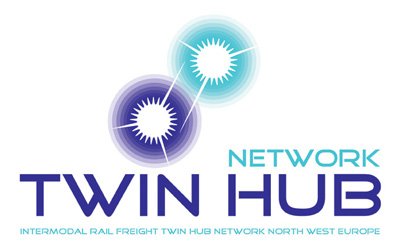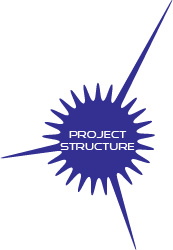Objective
If the pilot is as successful as expected, this will contribute to the enlargement of its advertising power, attracting more flows, maybe encouraging more operators to join the Twin hub network, and enlarging the commitment of actors, for instance in the field of infrastructure, to facilitate the network. The pilot is the ultimate test and demonstration that the Twin hub concept is as beneficial as theory suggests, and that operations can be made more efficient.
Interactive booking system
Actions
- Action 3: A global business plan. The rail operators choose one of the promising Twin hub networks identified in WP 1 and a business plan is created for this network. The plan is to be as specific as required for a successful pilot and as global as necessary for company policies.
- Actions 4, 5 and 6: Run pilot trains 1, 2 and 3. Each train runs between a maritime and an inland terminal in NWE, visiting a hub - Antwerp or Rotterdam - on the way to exchange containers with pilot trains 2 and 3. Actions 4 to 6 include all the preparatory activities such as organising paths, slots and traction.
- Action 7: Develop an interactive booking information system. The project in a system-analytical way gives an outline of the options to connect the booking systems of the rail operators and nodes (e.g. ports) involved in an interactive way, matching transport demand and train capacity. The project will programme an interface between the systems, as far as the situation and results of the system analysis require and allow. The information system is no prerequisite for Actions 4 to 6, but increases the operational efficiency amongst cooperating competitors.
- Action 8: Monitor the pilot operations in terms of relevant information for the pilot and the following WPs.
Main outputs
1) to transport containers using the three trains in the pilot Twin hub network, achieving good performances including - by the end of the pilot or earlier - the full coverage of costs by all train services.
2) The appropriate loading of the pilot trains is supported by a newly developed interactive booking information system used by the operators in the pilot. This system and its utilisation is the second output of the project. Download final report General Functional Description Twin Hub Order Booking system
3) The third main output is the pilot monitoring results. They focus on the success of the pilot in terms of vehicle performances (loads, frequency, transport time, punctuality at the hub, the terminal-to-terminal rail costs and the cost-coverage) and infrastructure performance. The public parts are documented in a report.
An intermediate output is the business plan of the rail operators in the pilot. Its contents are the commercial aims of the pilot, the network strategy of the Twin hub network, an operational and a marketing plan, the management and organisation, and a financial plan. The business plan gives orientation to the pilot operations.
An intermediate output of WP 2, to be processed in WP 4, is the experience of the operators in terms of acquiring appropriate train paths and terminal slots, that is to say paths and slots that fit well with the designed train and exchange services. The relevance of this output is in the complexity of path and slot planning in a hub-and-spoke network, which needs many well-synchronised parallel and sequential paths and slots, especially as the demand for paths and slots originates from different companies.




